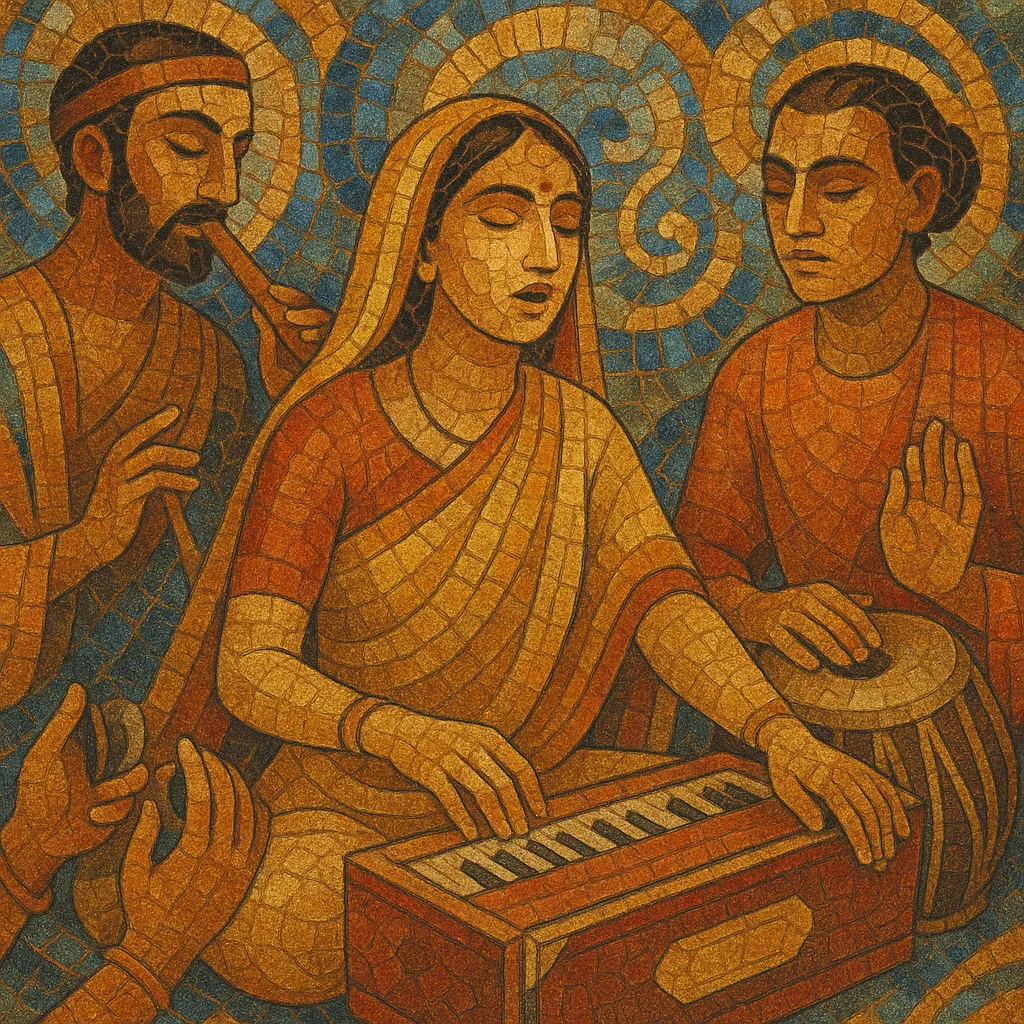Kirtan is a devotional, call-and-response singing tradition rooted in the Bhakti movements of the Indian subcontinent and practiced within Hindu and Sikh contexts. It centers on the communal chanting of sacred names and texts, typically over a steady drone with simple, cyclical melodies.
Musically, kirtan blends raga-based melodic contours with accessible refrains, gradually building energy through repetition, tempo increases, and collective participation. Common instruments include harmonium, tabla or hand drums (such as mridanga/khole), kartals (hand cymbals), tanpura, and sometimes melodic instruments like bansuri (flute) or sarangi.
While its liturgical purpose is spiritual remembrance (smarana) and devotion (bhakti), modern kirtan has also become a global, participatory practice associated with yoga and meditation, often incorporating world-fusion timbres while preserving the core call-and-response form.
Kirtan’s roots lie in ancient Indic devotional and liturgical practices, evolving out of Vedic recitation and early communal singing. As a named and socially embedded practice, it crystallized during the Bhakti movements that spread across the subcontinent, where poet-saints promoted direct, emotive devotion through sung praise and collective chanting.
In the 1500s, kirtan became prominent across Vaishnava communities (notably with Chaitanya Mahaprabhu in Bengal) and within Sikhism as Shabad Kirtan, set to prescribed ragas in the Guru Granth Sahib. These lineages emphasized call-and-response, simple refrains, and congregational participation. Over time, regional styles emerged, drawing from local folk idioms and classical (Hindustani and, in the south, Carnatic) frameworks.
As musical cultures codified, kirtan absorbed and interacted with courtly and classical vocabularies—adopting ragas, talas, and performance etiquette from Hindustani/Carnatic systems—while remaining accessible to lay congregations through repetitive forms and memorable choruses.
The 20th century saw kirtan travel globally via diaspora communities, spiritual teachers, and later the yoga movement. From the late 20th century onward, Western and pan-global artists embraced kirtan, fusing it with acoustic folk, soft rock, and ambient/new age textures. Contemporary recordings retain the devotional core—names/mantras, communal singing, gradual intensification—while broadening instrumentation and production aesthetics.


